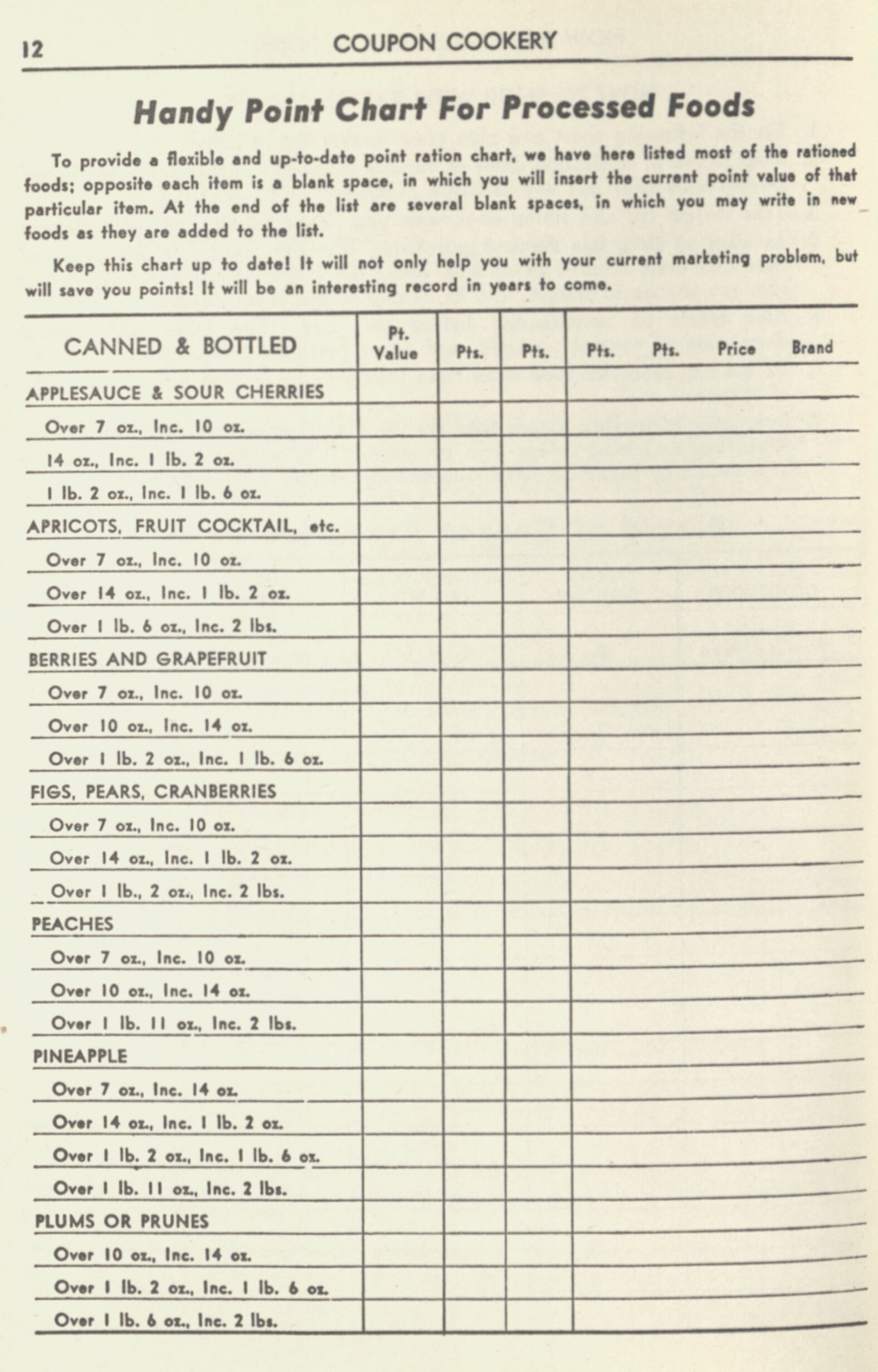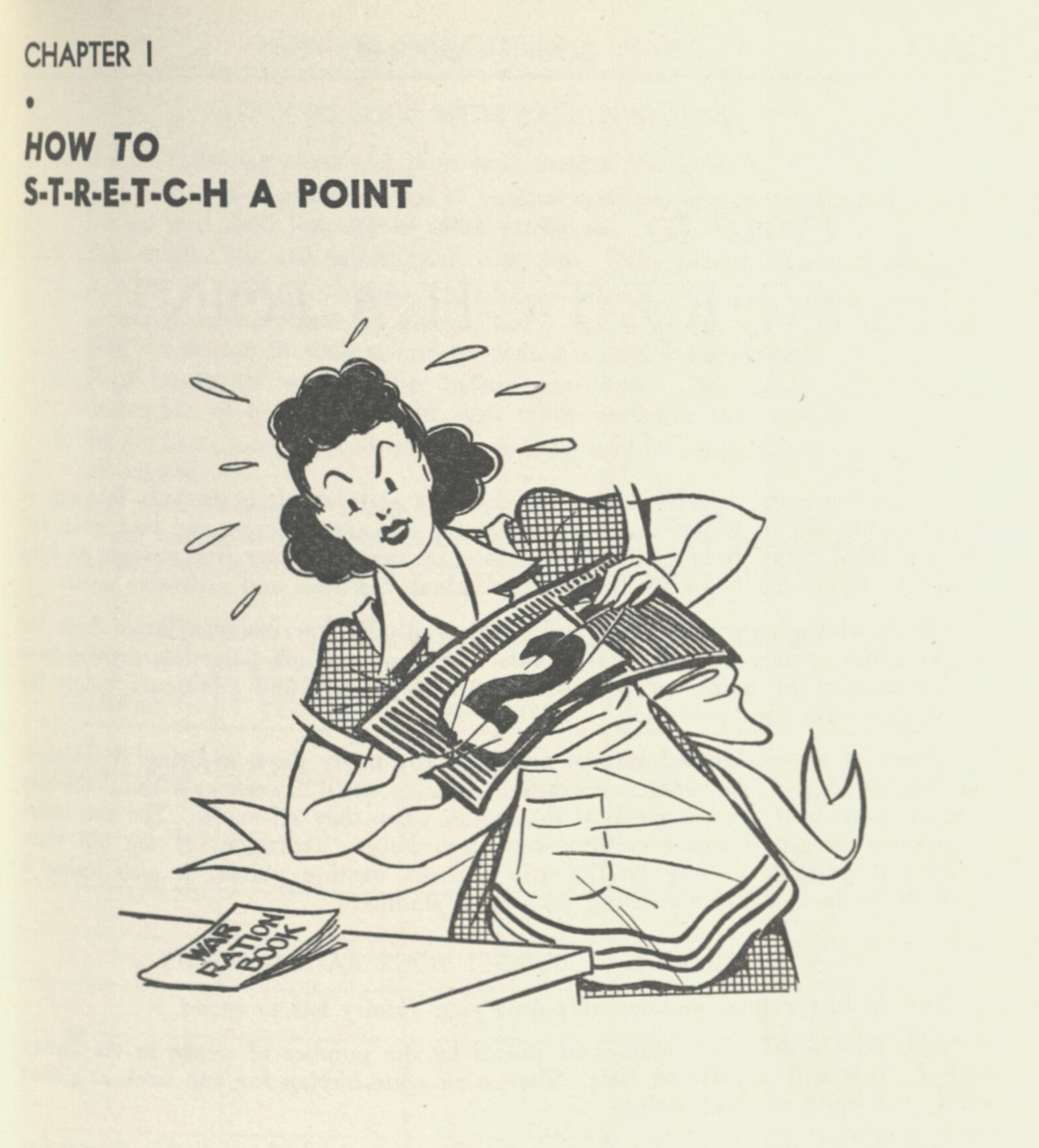

KENNESAW, Ga. | Dec 20, 2021
KSU Honors Student Camilla Stegall explores rationing during WWII using the Bentley Rare Book Museum's copy of Coupon Cookery (1943).
Welcome back to the Cookery Corner! I hope you all had a wonderful Thanksgiving and maybe tried out a recipe from World War I! In the next two blogs, we’ll focus on the next world war and the next holidays through Coupon Cookery.
Eighty years ago, on December 7th, 1941, the Japanese military bombed the U.S. naval base in Hawaii, Pearl Harbor. World War II had begun in 1939, but after the attack on Pearl Harbor, the United States officially entered the war. From that point forward, American life drastically changed, especially in how Americans approached food.
As we previously discussed, during World War I, rationing under the U.S. Food Administration was voluntary and focused on patriotism and substitution. World War II was vastly different. While Americans were still bombarded with patriotic propaganda that encouraged rationing and eating right, rationing under the Office of Price Administration (OPA) was mandatory. Rationing began with sugar in May 1942. Coffee followed in November 1942. By mid-1943 several important food categories were rationed by the federal government under the point system.
So, how did the rationing point system work? Every month, every American would get a ration coupon book. Coupons were red for meat and dairy and blue for canned goods. Coupons came with a variety of different number of points allocated to them. According to Coupon Cookery, each American received “a stated number of points of processed food per month and additional points

Coupon Cookery was written in 1943 by “Prudence Penny.” I put Ms. Penny in quotations, because she was not just one person, but dozens. Beginning in 1920, “Prudence Penny” was the food columnist featured in Hearst newspapers across the country, which included the New York Daily Mirror, where Florence Richardson worked as Ms. Penny. Richardson was probably the Prudence Penny who wrote Coupon Cookery. Unfortunately, there is little information on Richardson. However, what is a Hearst newspaper? A Hearst newspaper is a newspaper that was under the control of the legendary William Randolph Hearst and his media company. Hearst entered the world of printing in 1887 by becoming the proprietor of the San Francisco Examiner. By the 1920s, Hearst’s (now 28) newspapers accounted for almost 25% of American newspaper readership. Among his innovations to printing were the first comics in color. Hearst and his company also published magazines, such as Good Housekeeping, and later branched out to newsreels, radio, and TV.
Now that we know a bit about Ms. Penny and her creator company, let’s look at her book. Coupon Cookery is filled with information about World War II rationing. Rationing changed the ways that Americans cooked, used cookbooks, approached food shopping, and dealt with nutrition and satiety. According to the dust jacket, Ms. Penny “foresaw many of these problems arising…accordingly sat in conference with famous nutrition experts, tested menus with typical families, devised ways and means of overcoming the difficulties of ration cookery, discovered weak spots and corrected them…” Obviously she was a very busy lady!
The first chapter covers “How to S-T-R-E-T-C-H A Point!” It features advice for how to navigate the point system including budgeting points and shopping with coupons. Coupon Cookery also

After the several chapters of recipes, in the chapter “Prudent Tips and Penny Savers,” Ms. Penny provides pages of household tips to help save time, food, and money. Some sound familiar to us today: “Prepared biscuit and cornbread mix will save time and other ingredients subject to ration…”
Next time we’ll delve into the recipe chapters with a focus on “To Satisfy the Sweet Tooth” as we get into the holiday spirit by exploring some holiday recipes from Coupon Cookery!
For more information on food and rationing during World War II check out these sources:
From KSU’s Museum of History and Holocaust Education: online exhibit “Nourishing Survival” https://spark.adobe.com/page/DxYD93t327PxP/
Rationing by The National World War II Museum in New Orleans: https://www.nationalww2museum.org/war/articles/rationing
Manly Meals and Mom’s Home Cooking: Cookbooks and Gender in Modern America by Jessamyn Neuhaus
How America Eats: A Social History of U.S. Food and Culture by Jennifer Jensen Wallach
Hearst information from:
To learn more about the “History of Hearst” Publications check out this short YouTube Video: https://www.youtube.com/watch?v=HvJQ6AZfT6Q
The Food Section: Newspaper Women and the Culinary Community by Kimberly Wilmot Voss